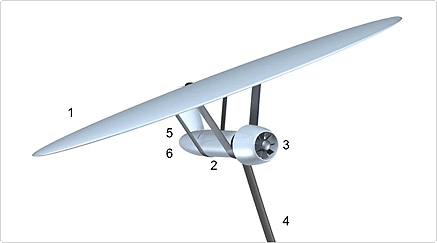This Wednesday sees 20 start-up companies pitch their wireless technologies and business plans to venture capitalists, angel investors and wireless industry leaders.
The finalists in this year’s Discovering Start-Ups 2012 competition will each have five minutes to pitch followed by four minutes of questions from the judging panel which is made up from representatives of organisations including include BT, Scottish Equity Partners, Nesta Investments and Cambridge Wireless, who organised the event with Silicon South West.
Of the 20 companies, Itechland will put the case for its intelligent multi-parameter node for wireless sensor networks in smart homes, factories, care, and rescue systems; Skin Analytics will seek funding for its cloud-based service that monitors small changes in moles to detect melanoma skin cancers; and Anvil Semiconductors will pitch its patented technology to develop silicon carbide power semiconductor devices for the same price as silicon technology.
Keynotes will be delivered by Miles Kirby, MD of Qualcomm Ventures Europe and Debu Purkayastha, principal - New Business Development at Google, who will give a presentation entitled, ‘Why Start-ups matter to the Big Tech Giants and what they look for in M&A or Investments’.
Let’s hope the 20 start-ups do a lot better than those in a report published today by Experian, which says an average of £4.7bn in unpaid debt may be left behind every year by UK firms that choose to close down.
Experian’s latest BusinessIQ analysis looked at firms that closed down voluntarily and applied to be removed from the Companies House register since 2000. It found that each year around 13 per cent of these firms had debts that exceeded their total assets just before they closed.
In 2011, 300,000 firms are said to have wound up voluntarily, with 36,000 having debts amounting to £5.9bn. Experian says that 21,000 firms were declared insolvent during the same year - with insolvency practitioners involved - and the total estimated debt left behind by them was £11.7bn.
Click here for more information.
The Institution of Civil Engineers warns today that policymakers need to look beyond the energy landscape of 2020 and start thinking what it might look like in 2030.
The report, Post 2020 energy scenarios and pathways to 2030, acknowledges the Electricity Market Reform’s place in advancing the policy framework to 2020 but states, ‘even more ambitious action will also be required during the 2020s if we are to secure a decarbonised 2030 – and this action must be planned for soon.’
Pathways suggested by ICE include committing to a target that virtually decarbonises electricity by 2030, arguing that a binding target will provide investors and industry with certainty and confidence; continue the uptake of renewable heat through regulation, cost reduction and better installation standards; and ensure that energy is a priority for any transport strategy.
The report can be viewed here.
Deloitte’s 2013 Global Manufacturing Competitiveness Index ranks China as the most competitive manufacturing nation in the world and that it is likely to remain so five years from now.
Thankfully, Dr Ji Zhou, president of the Chinese Academy of Engineering said recently that the UK remains one of China’s most important economic partners and this week his organisation hosts Sir John Parker GBE FREng, president of the Royal Academy of Engineering, who is leading a delegation of engineering experts to Beijing.
According to the RAEng, the group will meet some of China’s most influential engineers to progress discussions on emerging technologies and developing new industries such as bioengineering, advanced manufacturing, energy storage and novel vehicle fuels, further to a memorandum of understanding on emerging technologies signed by the two Academies earlier this year.
AREVA group is widening its offshore wind turbine manufacturing base with a proposed facility in Scotland.
The UK is said to be home to the world’s largest offshore wind market and the new facility - expected to create 750 direct jobs in the manufacture of wind turbines and blades - will add to existing capabilities in Bremerhaven, Germany and Le Havre, France.
The company has signed a Memorandum of Understanding with Scottish Enterprise for the plant, which will produce 5MWe turbines for the offshore market.
We finish Briefing with news that Minesto has been authorized by the Crown Estate to perform tidal energy tests in the waters off Northern Ireland.
The Swedish company will perform 1:4 scale trials of Deep Green in Strangford Lough, which they claim is the only solution that works cost-effectively in slow currents and has the potential to double the amount of tidal power produced in the UK.
The new tests, scheduled to last for up to two years, are expected to start in early 2013 and follow trials completed this year at 1:10 scale.
Full scale testing will follow on the device that Minesto describes as a sweeping underwater kite comprised of a wing and a turbine secured to the seabed with a tether. In operation it moves in a fast figure-of-eight shaped path in the tidal and ocean current. See for yourself below or click here to view an animation of Deep Green in action.












BEAS funding available to help businesses cut energy costs
And not a moment too soon, if the following exchange broadcast last Friday 13th June, on the Radio 4 ´Rare Earth´ program (link below, ~ 17 minutes...